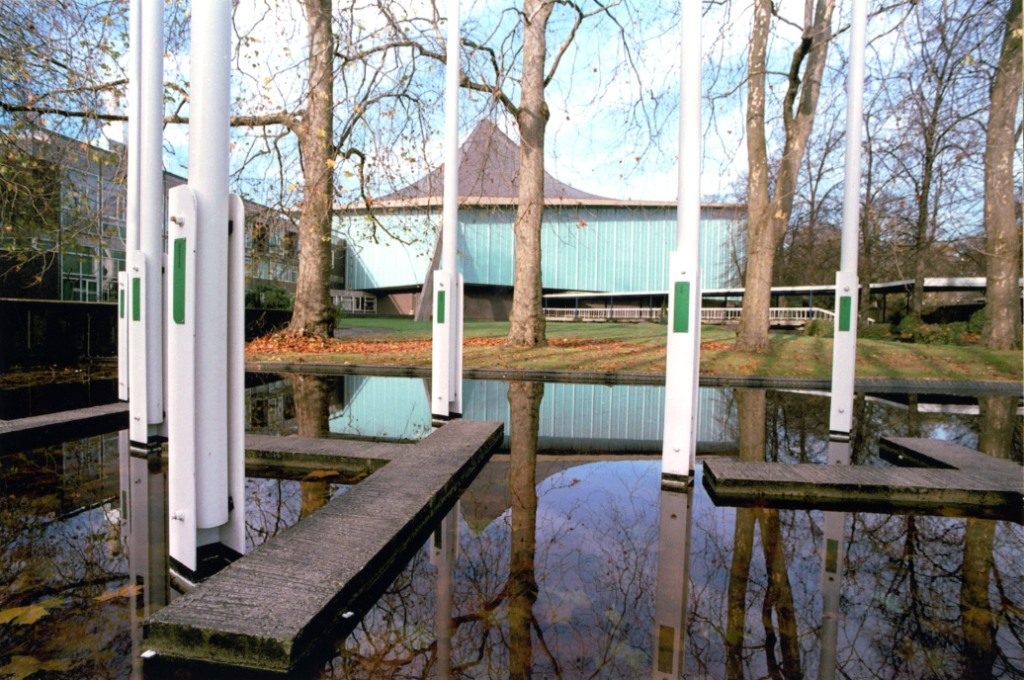Listed London landscape destroyed

In the 1960s part of the London County Council’s Holland Park was given over to the new Commonwealth Institute. Designed by RMJM the new building was remarkable for its hyperbolic paraboloid roof. It was described as a tent in a park. And its grounds, carved out of Holland Park were handed over to the Commonwealth Institute by the London Council Council. Dame Sylvia Crowe designed the new grounds, it looked out on Knightsbridge High Street and marked by flags of all the countries of the Commonwealth. A canal alongside the avenue into Holland Park marked the way to the Institute. The avenue and main entrance was linked by a colonnade which bridged the canal. Between the flag pole plaza and the lawns leading to the Institute was a line of plane trees.
Sylvia Crowe’s only listed London landscape design
Sylvia’s Crowe’s design was placed on the Register of Designed Landscapes by the old English Heritage in 1998 (i) It was one of only fifty one post war designed landscapes and the only one by Sylvia Crowe (ii).
The copper roof was the glory of the building and also its flaw: it leaked and despite repeated recladding the Commonwealth Institute vacated the building in 2002. Since then Kensington and Chelsea and the old English Heritage have sought ways to find a new use for the grade II* listed building. Eventually a hero was found in Sir Terence Conran who helped fund a move of the Design Museum from Butler’s Wharf to a refurbished building. However, the saving of the old Institute building has come at a cost. The Historic England list of post-war designed landscapes has been reduced by one to fifty. Dame Sylvia Crowe’s design has been completely destroyed and replaced by an urban space by West 8. What was park has been destroyed. Clearly the 1960s design has not been valued sufficiently.
Money from property development
This is because the money to save the old Institute building came from property development. This has been in the form of development of three large apartment blocks designed by OMA. Set at 45° to Knightsbridge High Street these bite into what were lawns so removing Crowe’ design. Plus maybe a lack of valuing Crowe’s design? So loss of important Sylvia Crowe design, plus loss of London park. So sad, see more on
(i) the English Heritage listing is reproduced on the Parks and Gardens website, http://www.parksandgardens.org/places-and-people/site/902/description
(ii) for a list of the fifty one designed landscapes see English Heritage Landscape Advice Note: Examples of post 1945 Designed Landscapes included on the Register of Parks and Gardens :2013 https://content.historicengland.org.uk/images-books/publications/lan-post1945-designed-landscapes-rpg/LateC20DesignedLandscapes.pdf/
